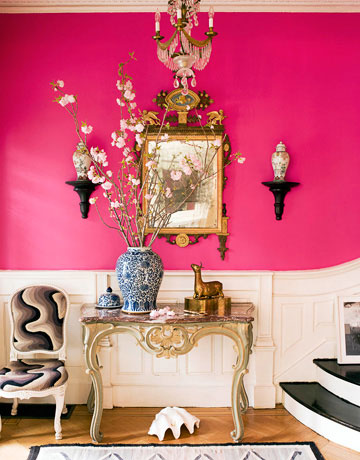Decorating
with color can be intimidating to many. People are often afraid of picking the
“wrong” color, or simply don’t want to commit to a specific color which they
might get tired of down the road. There are reasons for that.
Neutrals,
on the other hand (white, gray, black and beige) seem like a “safer” choice to
many people. Neutrals can easily be mixed with each other, as well as with vibrant
colors. The reason for that is that neutral colors are actually a combination
of all colors at different ratios. Beiges
can be greenish, yellowish or pinkish. Grays can be bluish, purplish or
greenish.
So
why do so many neutral rooms seem boring and static? The reason is that they
often lack one or more of the following:
Contrast – when there’s
hardly any variation between the darkest and lightest neutrals in a room, it
lacks contrast and excitement. If you
are not sure, try taking a picture of your room, convert it to black and white
and you will see what I’m talking about.
Texture – decorating
with a variation of contrasting textures – smooth/ rough, shiny/flat, tight/ relaxed .
some examples of contrasts: glass/sisal, distressed wood/metal
Variety of materials
– a mix of different
materials is intriguing and sophisticated – wood, metal, wrought iron, glass,
wicker, sisal, pottery, leather, fabric, shag rugs, plastic, plaster.
Interesting
lines – lines
create movement and avoid a static feel. if you are decorating with lots of
white, add pieces that have interesting lines to them – wrought iron lamps,
capis lamp
Add something black
– every room
needs something black and neutral rooms benefit from more than one piece. Black
creates depth and emphasis.
Accent color “pop”
– in an all
neutral room, even a tiny bit of vibrant color can “lift” the look. It can be a
pillow, chair, vase, picture, lamp shade, anything really. Try placing that “pop”
of colorful object where the focal point is. This will draw attention to where
you want it.
The advantage of keeping a neutral color scheme and adding small
accent colored pieces, is that it’s fairly easy to change the look with a
simple change of the accent pieces.
Plants – plants are always a great addition to any room. A cheap
way to bring in life, color and stay in the neutral theme
If you'd like help with color, redesigning or decorating your own home, contact me @
vered@veredrosendesign.com
617-584-9965

































